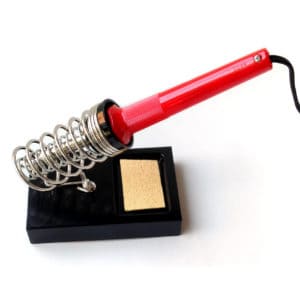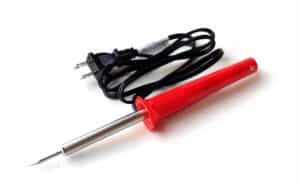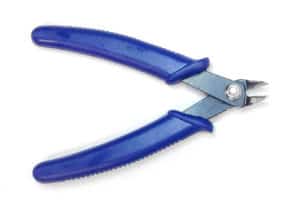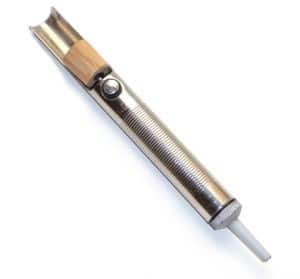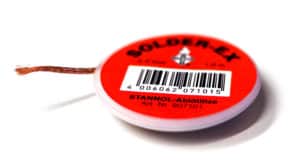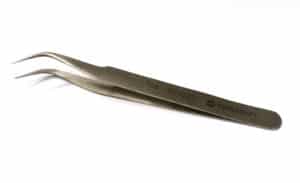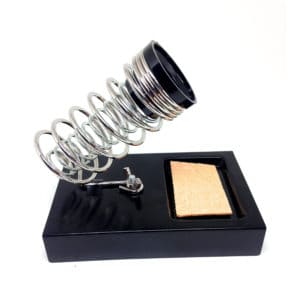The only soldering tools you really need to get started with soldering are a soldering iron and some solder. If you just want to get started, that’s what I recommend you get.
Even though you can do a lot with just a soldering iron, getting a few extra tools could make things easier.
In this article, I’ll show you what the basic soldering tools are.
Soldering Iron
You can’t do much soldering without a soldering iron.
But a soldering iron does not have to be expensive. You can find soldering irons for less than $10 that would work for most beginners’ needs. But as you progress and you want to make more advanced boards, you might want to invest a bit more.
I’ve written a guide on how to find the best soldering iron for your needs. Read that article if you want to solder, but have no idea which soldering iron to choose.
Even though not a “tool”, you’d also need some solder wire to solder.
Wire Cutter
The wire cutter is a very handy little soldering tool. Use it to cut long component legs, or to strip the end of a wire.
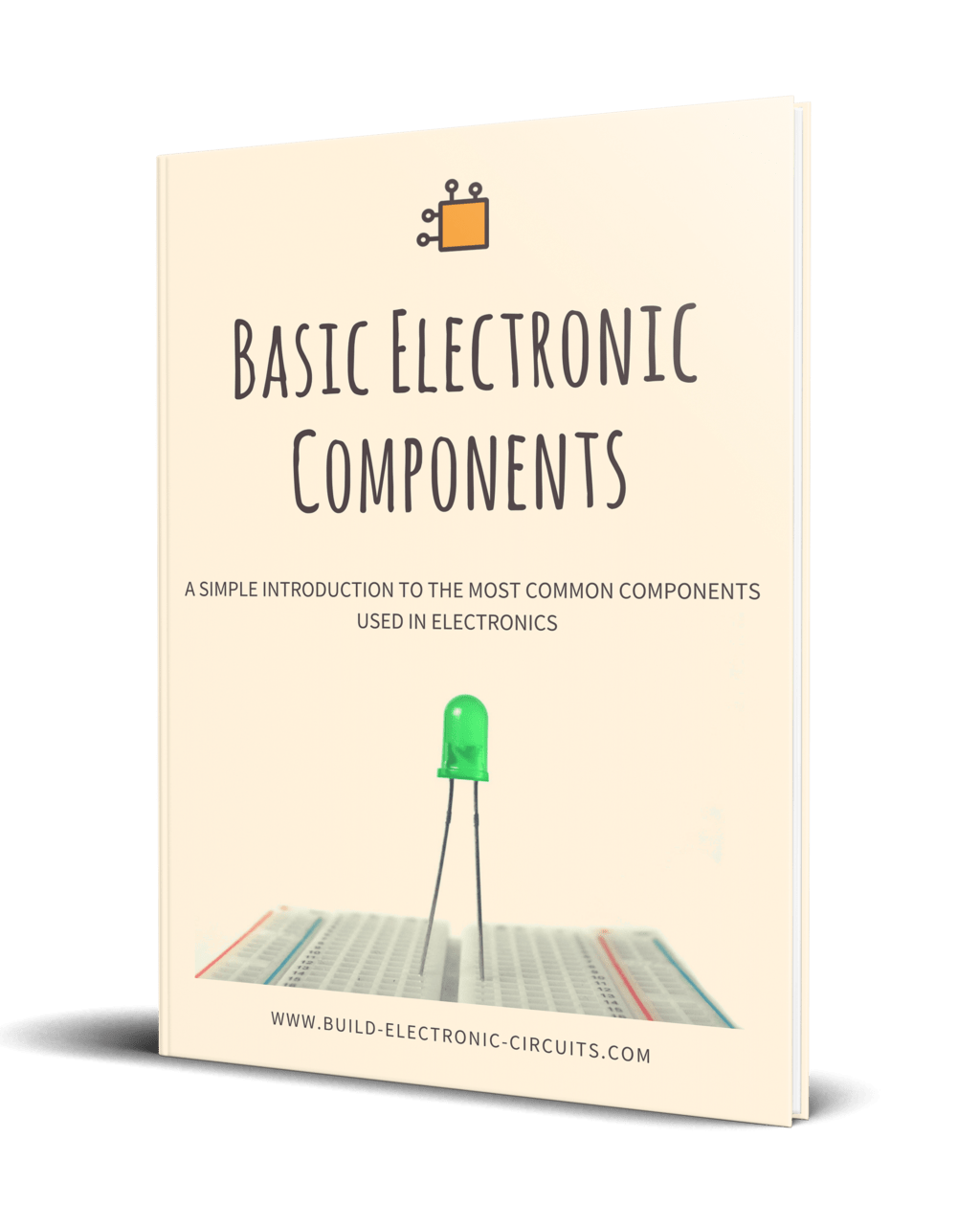
Get Our Basic Electronic Components Guide
Learn how the basic electronic components work so that circuit diagrams will start making sense to you.
They also go under the names flush-cutters, diagonal cutters, electronic snippers, clippers, etc.
I’ve never put much money into this tool. The cheapest available is usually good enough for most things. For example this one from Hakko.
I’m old-school and prefer to use a wire cutter. But you can also consider making your life easier with a wire stripper.
Soldering Tools For Desoldering
Sometimes you make a mistake. Or you need to replace a component in a circuit. This means you have to desolder to fix it.
There are two tools I use for desoldering: The solder sucker and the solder wick.
Solder sucker
The solder sucker, or solder pump, is a mechanical vacuum pump. It sucks the solder away from the solder joint. Just heat the solder joint to make the solder fluid, then suck it off with the solder sucker. I use this tool when I need to remove a lot of solder at once.
Here’s a nice bundle with both a solder sucker and a solder wick.
Solder wick
The solder wick is another tool for removing solder. It’s made up of copper threads that will absorb the solder from the solder joint.
I use the solder wick for removing small amounts of solder. For example to remove “solder bridges” between pins on a chip. Or if there’s a bit of solder left on a bigger solder joint that the solder sucker just won’t suck.
Here’s a nice bundle with both a solder sucker and a solder wick.
Tweezers
Tweezers are great. You can use them to keep components in their place and to avoid burning your fingers when soldering.
If you ever soldering surface mount components, these are very useful for placing small components.
USB Microscope
My USB microscope has been invaluable in some debugging situations with fine pitch components. With this you can for example discover tiny solder joints between pins that are not supposed to be there. This is also very useful for people who has problems with they eyesight.
This is not something that has to cost hundreds of dollars. You can find microscopes that are good enough for less than 50 bucks. For example this USB microscope for electronics that has gotten a lot of great reviews.
Wet Sponge
A wet sponge is very useful for cleaning the tip of the soldering iron. The tip is hot which means it will oxidize very fast and get dirty. A clean tip transfers heat faster and makes your soldering easier.
A sponge is so cheap anyway, so you should always keep one together with your other soldering tools.
Note that if you buy a soldering iron stand, a sponge is usually included.
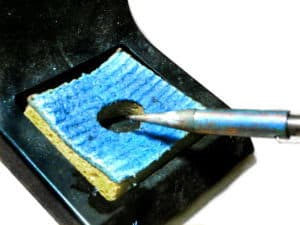
Soldering Stand
A soldering iron gets hot, so it’s important to place it in a safe way in between soldering. A soldering iron stand is very handy for this. Since it takes up a lot of space, I don’t bring mine when travelling, but I always have one at my desk in Norway.
It only costs around 5 bucks, so I think it’s worth having one. Here’s a soldering iron stand from Elenco that is perfect for a hobbyist.
Safety Glasses
A pair of safety glasses is something I really recommend when soldering. Okay, I admit that I don’t *always* use them myself. But, the consequences of getting hot soldering splashed into your eye can be terrible. So, please use them. And I will also do my best at remembering to use them from now on.
A pair of normal glasses is better than nothing. But if you want to look like a scientist, here’s a reasonably priced pair from Amston.
Where Do You Buy Soldering Tools?
The tools you need can usually be bought at your local hardware store. But you can also buy the tools from an online shop. I’ve created a list of recommended places to get tools and components for electronics.
You can find the list here: Where To Buy Electronic Components And Tools?
If there are any tools you are using that you can’t find on the list, let me know in the comments field below.
Return from Soldering Tools to How To Solder
More Soldering Tutorials
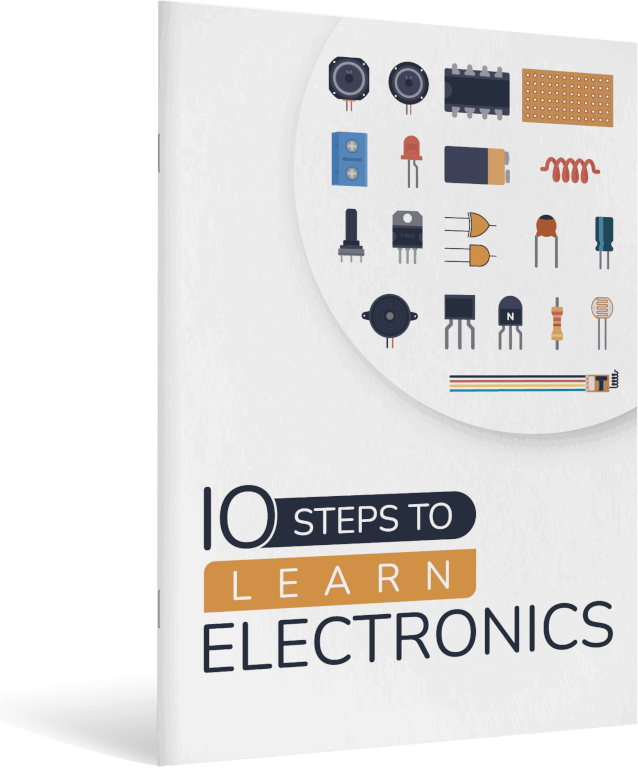
10 Simple Steps to Learn Electronics
Electronics is easy when you know what to focus on and what to ignore. Learn what "the basics" really is and how to learn it fast.

